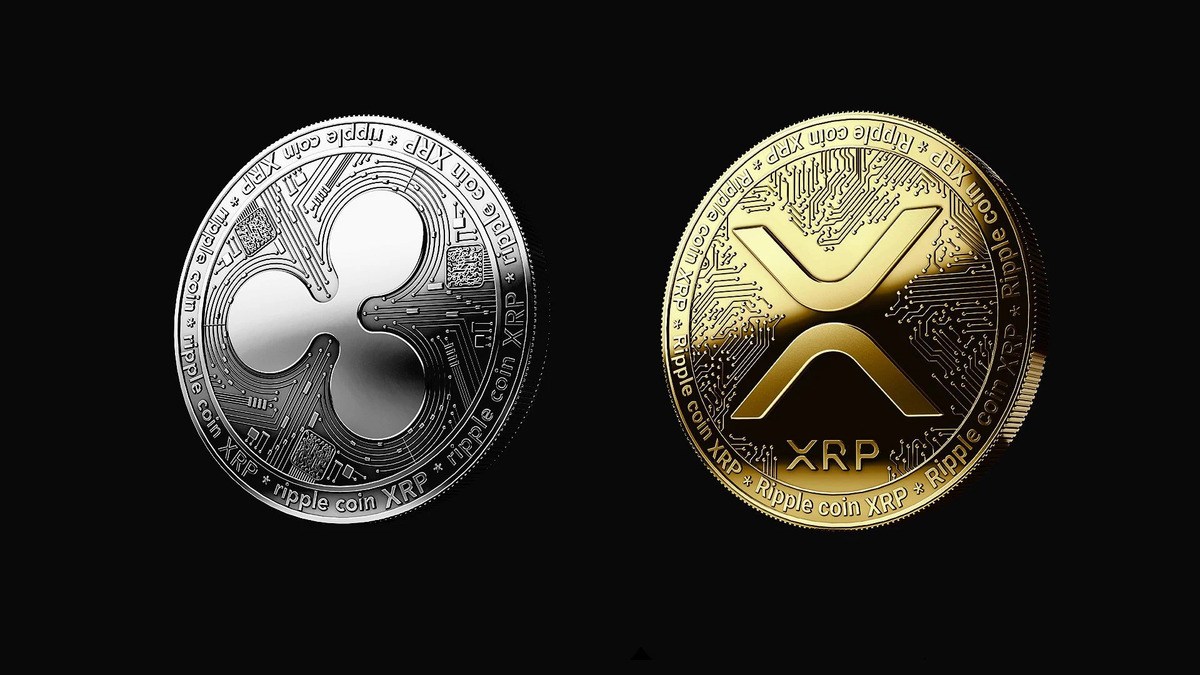The emergence of bitcoin (BTC), the leading cryptocurrency by adoption and market value, ushered in a new financial era. Though BTC is an outstanding and unmatched financial innovation from the anonymous creator(s) Satoshi Nakamoto, it possesses some flaws which gave rise to manifold alternative coins and tokens such as Ethereum (ETH), Polygon (MATIC), Cardano (ADA), Solana (SOL), and a host many others.
XRP is one of the earliest cryptocurrencies created to be a better version of BTC in terms of speed, scalability, associated network fees, and being environmentally friendly. Designed in 2012 by three BTC developers, XRP is among the top 6 cryptocurrencies by market capitalization as of March 2023.
XRP is arguably the most controversial crypto token in history as it has been at the center of a long-standing lawsuit filed against Ripple Labs Inc and two of its executives, Brad Garlinghouse and Chris Larsen, by the United States Securities and Exchange Commission (SEC). The Gary Gensler-led SEC alleges that XRP is a security but Ripple Labs Inc, the San Francisco-based crypto solutions company, and several other crypto proponents remain confident that XRP does not fit into the theory of what makes a security.
Despite these debates surrounding XRP, the Ripple-related digital token is still on the radar of many crypto investors and traders due to its wide range of outstanding benefits and use cases.
In this article, you will get to understand what XRP is, how it works, and what makes it interesting. You will also learn the difference between Ripple and XRP together with their age-old relationship.
What is XRP?
Created in 2012, XRP is the native token of the XRP Ledger (XRPL). XRP was originally dubbed “ripples” by the founders with XRP as the ticker. Later on, the XRP Ledger community started calling the digital asset by its currency code, ‘XRP’, abandoning the original name ‘ripples.’
Although the crypto asset was inspired by bitcoin, it is designed to be a more efficient and sustainable digital asset having a wide range of use cases. The XRP token was built to be the driving force of the decentralized ledger (XRPL) which supports many other cryptoassets, fiats, and real-world assets such as USD, EUR, Oil, Gold, and reward points among others.
XRP’s core functionality is to enhance liquidity between currencies, including crypto coins, tokens, and other forms of value on the ledger. The digital token is also used to bridge currencies in the XRP Ledger’s decentralized exchange, when necessary. Since XRP can settle transactions on the ledger speedily (within 3-5 seconds), it is specifically used for payments.
Beyond the mentioned functions, XRP also serves as a tool to protect the decentralized ledger (XRPL) from spamming activities. Over the years, more use cases have been added for XRP by the XRPL community and the cross-border payment solutions company, Ripple Labs Inc. These Ripple-created use cases are discussed in the latter part of this article.
On the XRP network, transaction fees are far lesser when compared with the Bitcoin network. That is, a little quantity of XRP, valued at $0.0002 is levied to process transactions on the XRP Ledger. However, XRP sending fees vary based on network activity. For XRP, all associated transactions are carried out and resolved on the XRP Ledger. Additionally, on the XRP network, 1,500 transactions can be processed per second (tps) which justifies its high scalability.
Unlike other cryptocurrencies, XRP cannot be mined and no new tokens will ever be produced. This is because, upon launching the XRP Ledger in 2012 by the trio of founders, the total supply of the digital asset pegged at 100 billion XRP coins was minted. 80% of XRP’s total supply which equals 80 billion units of XRP was gifted to the San Francisco-headquartered enterprise blockchain company Ripple while the three co-founders kept the remaining 20 billion XRP tokens for themselves.
Owing to these facts, XRP is considered by some to be a centralized cryptocurrency as its supply is controlled by Ripple and its co-founders.
What is XRP Ledger (XRPL)?
To tackle the flaws of Bitcoin, David Schwartz, Jed McCaleb, and Arthur Britto jointly began the development of the XRP Ledger in 2011. The trio of developers finished code development and the XRP Ledger went live in June 2012 with its native token, XRP. In September 2020, the XRP Ledger (XRPL) Foundation, an independent and not-for-profit organization focused on fostering the adoption and development of the XRP Ledger was established.
The XRP Ledger (XRPL) is a decentralized, open-source, and permissionless blockchain that anybody can contribute to, develop, and transact on. While Bitcoin uses proof-of-work and Ethereum uses proof-of-stake, the XRP Ledger uses a very unusual consensus algorithm known as the XRP Ledger Consensus Protocol.
The protocol is designed to have properties of correctness, agreement, and forward progress. With this unique mechanism, XRPL is able to solve the double spending problem in a more efficient way than the Bitcoin network does. Generally, the XRP Ledger is said to be highly scalable, reliable, less energy-intensive, fast, and cheap to use.
The distributed ledger offers powerful utility and flexibility to developers, supporting a wide range of use cases like payment, decentralized finance (DeFi), non-fungible tokens (NFTs), tokenization, and more. Governance on the XRPL is community-led as validators must approve before any change or amendment can be executed in the XRPL community. Precisely, at least 80% of the network contributors need to approve before any changes regarding transaction processing or consensus are implemented.
For clarity, the XRP Ledger isn’t owned by Ripple Labs. However, Ripple is a prominent contributor to the network as the crypto solutions company runs 6 nodes available on the default Unique Node Lists consisting of 35+ nodes. Ripple’s rights on the XRP Ledger are equal to those of every other contributor on the network. In total, there are 150+ validators on the XRPL network.
Read also: What is cryptocurrency?
What is the Relationship Between Ripple and XRP?
Ripple Labs Inc, commonly called Ripple, is often mistaken as the creator of the XRP token. Ripple isn’t the founder of XRP but both entities are closely related. The company dates back to September 2012 when all three XRPL creators alongside Chris Larsen started a separate company independent of the XRP Ledger project called OpenCoin.
At the creation of the OpenCoin, Chris Larsen was the Chief Executive Officer, Jed McCaleb was the co-founder and CTO, David Schwartz was the Chief Cryptography Officer (CCO) and Arthur Britto was the OpenCoin Company Advisor. Later in 2013, OpenCoin rebranded to what we now know as Ripple Labs Inc or Ripple with Brad Garlinghouse as the current CEO.
Notably, Ripple is a leading crypto solutions company and enterprise blockchain that majors in offering cross-border payment services. Ripple prides itself as a financial technology (fintech) company that makes it easier to build a high-performance, global payments business. Considering Ripple’s mission of building use cases for XRP, the XRP Ledger founders gifted Ripple Labs Inc 80% of its native token supply which equals 80 billion XRP. The total supply of XRP is 100 billion.
Ripple locked 55 billion XRP in escrow accounts with the aid of the XRP Ledger to control the circulation of the coin. The release of these locked units of XRP is completely regulated and executed by the XRPL’s unique consensus mechanism transaction-processing rules. As of March 2023, 42 billion XRP remains in escrow.
Following the design of XRP, Ripple and several other financial institutions have since employed XRP as a bridge currency to facilitate faster, reliable, and cheap cross-border payments around the world. What makes XRP a perfect bridging instrument between two different currencies is the ability for XRP to be transferred directly without needing a middleman. Also, Ripple’s On-Demand Liquidity (ODL) service leverages XRP to settle cross-border transactions swiftly, in contrast to traditional methods.
Ripple, XRP, and SEC
Both Ripple and XRP have seen a high level of controversy in the crypto market following their legal tussle with the SEC which began in December 2020. This has triggered both positive and negative speculations around the native currency, XRP, and the organization, XRPL.
Beyond these feuds, XRP is still ranking fairly well on the list of top crypto projects by market capitalization. The digital asset is available on many top crypto exchanges recording its peak price of $3.84 in 2018, according to Coinmarketcap data. From 2013 when XRP was introduced in the crypto market to December 2017, XRP traded for less than a dollar per coin. In January 2018, XRP price skyrocketed to its peak price. The second highest XRP price is $1.65 in May 2021.
If Ripple wins the case—as XRP holders and many followers hope—XRP price is expected to appreciate significantly. But if otherwise, the opposite is expected to be the case i.e. XRP price will further nosedive. Regardless, the use case of XRP as purely a medium of payment may survive XRP as an asset. And this may be the future some holders are banking on. But time will tell.
Nonetheless, Ripple, the crypto-solutions company based in San Francisco, has recorded numerous partnerships with many top financial institutions across the globe. These partnerships are struck with platforms who wish to adopt RippleNet Technology and leverage its On-Demand Liquidity (ODL) service for efficient cross-border payment solutions.
Read also: Introduction to Stablecoins: USDT, USDC, and BUSD
Credit: Ndianabasi Tom
A crypto journalist and content writer who has been talking about cryptocurrency and blockchain technology since 2018, Ndianabasi is a Writer at Crypto Asset Buyer (CAB).
Discover more from Crypto Asset Buyer
Subscribe to get the latest posts sent to your email.



